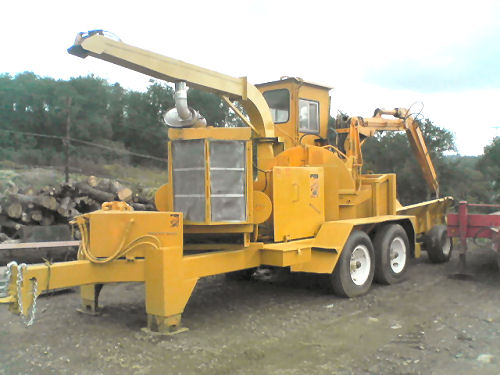Case Study: The Forestry (Logistics) Problem
Submitted: 3 Apr 2008
Application Areas: Logistics
Contents
Problem Description
Adapted from a real-world problem
A paper company own a number of mills that produce paper with different processes, e.g., the thermo-mechanical process (see
Figure 1), the cold caustic soda process, etc. They procure raw materials for each of their processing machines from a number of different suppliers.
Figure 1 Thermo-Mechanical Processing machine

Their suppliers consist of 3 forestry operations: Kaingaroa, NSW and Taupo. They also own a recycling plant where they receive waste paper.
They own mills at Kawerau (NZ), Boyer (Tasmania) and Albury (NSW). The following table summarises the processing machines at each mill:
The paper company purchases three types of raw materials: woodchips, pulp logs and waste paper. The thermo-mechanical, refiner-mechanical and cold caustic soda processes use woodchips, the stone groundwood process uses pulp logs and the recycled fibre process uses waste paper. The requirements (in tonnes) for their different machines are given below:
The supplies of the various raw material is given in the following table:
The transportation cost of the raw materials is given in the following table:
| $100/tonne of material |
Kawerau |
Boyer |
Albury |
| Kaingaroa |
4 |
10 |
8 |
| NSW |
12 |
6 |
3 |
| Taupo |
5 |
10 |
7 |
| Recycling Plant |
7 |
11 |
10 |
Note that pulp logs can be "chipped" into woodchips (see
Figure 2) at the suppliers at a cost of $250/tonne and that waste paper can be "compacted" into woodchips at the recycling plant at a cost of $600/tonne. Any excess waste paper that is not used must be disposed of at a cost of $150/tonne.
Figure 2 Wood chipper

The paper company want to know how to supply their mills at minimum cost.
For more detail see
Supply Chain Optimisation in the Paper Industry, Philpott and Everett
.
Return to top
 Their suppliers consist of 3 forestry operations: Kaingaroa, NSW and Taupo. They also own a recycling plant where they receive waste paper.
They own mills at Kawerau (NZ), Boyer (Tasmania) and Albury (NSW). The following table summarises the processing machines at each mill:
Their suppliers consist of 3 forestry operations: Kaingaroa, NSW and Taupo. They also own a recycling plant where they receive waste paper.
They own mills at Kawerau (NZ), Boyer (Tasmania) and Albury (NSW). The following table summarises the processing machines at each mill:
 The paper company want to know how to supply their mills at minimum cost.
For more detail see Supply Chain Optimisation in the Paper Industry, Philpott and Everett
The paper company want to know how to supply their mills at minimum cost.
For more detail see Supply Chain Optimisation in the Paper Industry, Philpott and Everett
